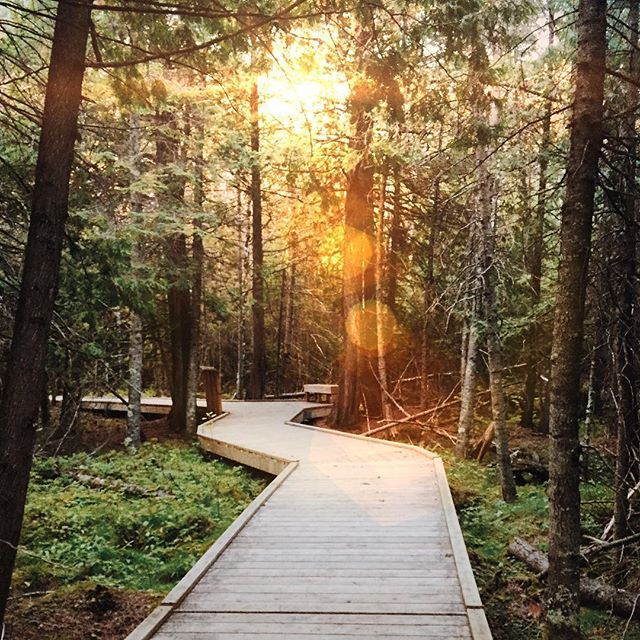Check out these hiking tips and learn how to plan and prepare for a safe and enjoyable experience.
1. Know your limits.
Choose your hike based on the experience and physical ability of everyone in your group. Some trails are well-marked with little difficulty and elevation gain and some are more technical and require navigation.
Properly estimate the length of your hike before you leave. The average speed of travel on a nature trail is 2 to 2.5 km per hour for a beginner.
2. Check the trail conditions and map.
Familiarize yourself with the trail map and bring it with you. This will help you find your way and avoid getting lost. Check the current trail conditions and weather forecast before heading out.
For backcountry hikes, bring navigation tools like a map, compass and GPS and make sure you know how to use them!
3. Hike with others.
Avoid hiking alone for safety reasons. Hiking solo should only be attempted by seasoned hikers or on easy, popular trails.
4. Always tell someone where you are going.
Plan your route well and tell someone your trip plan with information including: location, when you expect to be back, and who to call if you don’t return on time. This will make it easier for emergency personnel to locate you should something go wrong.
5. Bring safety equipment.
You are responsible for your own safety. Make sure you have the essentials; like a first aid kit and basic safety equipment such as a multi-tool, flashlight, fire starter kit, whistle, etc. Every hike has its own unique challenges, so find out what the conditions are before you go and adjust your packing list accordingly.
6. Wear appropriate shoes and clothing
Wear proper footwear and try to keep your feet dry. Your footwear should provide support, grip, protection, and should be comfortable and appropriate for the trail you choose. Even on easy trails you might find yourself walking on slippery surfaces like roots, wet grass or rocks. Leave the flip flops for the beach!
Choose lightweight, breathable clothing items that keep you dry and can be easily packed in your bag. Bring several layers of clothing even if it’s sunny and warm because the weather can change quickly. Don’t forget your sunglasses, sunscreen and a hat to protect yourself from the sun!
7. Bring enough food and water
Hydration is essential: plan on drinking about half a liter of water per hour and don’t wait until you are thirsty to drink up.
Bring nutritious, high energy snacks – you will be burning lots of calories! If you are going longer than a few hours, pack a more complete meal.
8. Dispose of garbage properly.
Put your trash and recyclables in designated bins or take it home. Leave no trace of your visit!
9. Use the designated paths.
Stay on marked trails. Going off trail not only disturbs wildlife but can also damage fragile vegetation.
10. Keep your distance from wildlife.
Do not feed, touch, or approach wildlife. Stay at least 100 metres (10 buses) away from bears, bison, cougars and wolves, and at least 30 metres (3 buses) from other large animals such as moose, elk, deer, sheep, and goats.
Credit: Parks Canada

